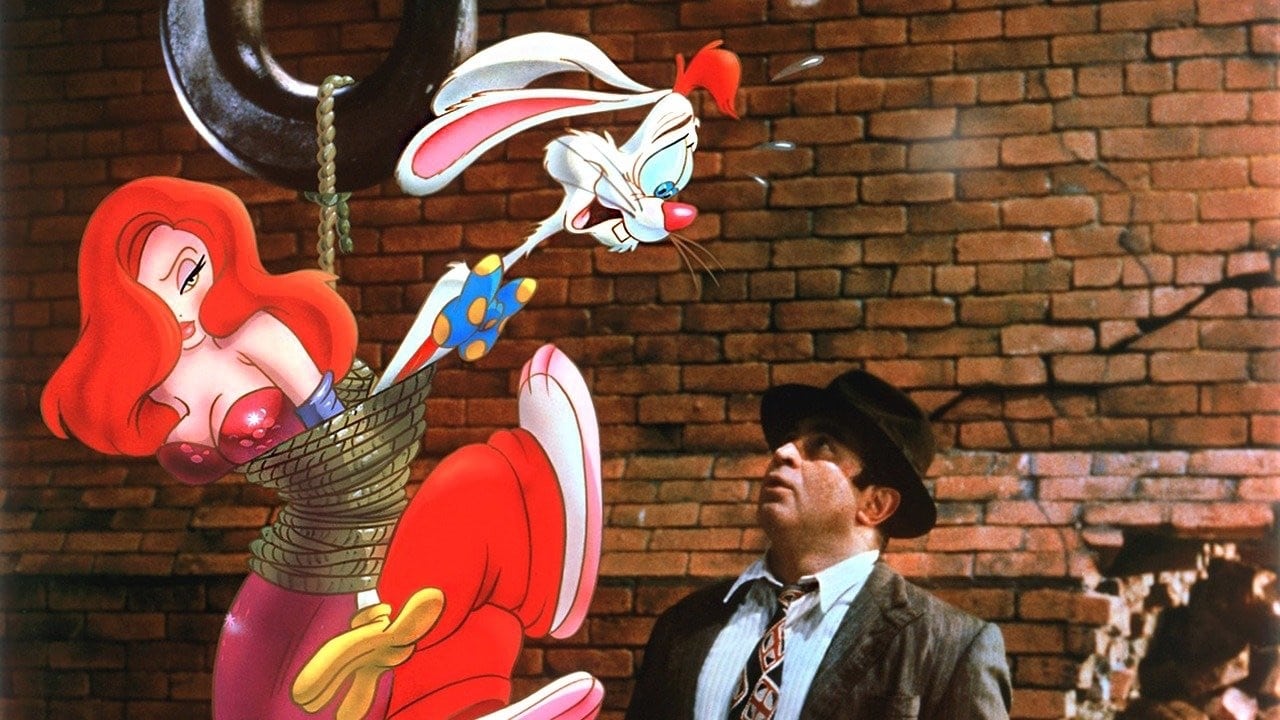
business), but he gets the evidence just the same.

Eddie, a traumatized, sardonic alcoholic, is reluctant, because he hates Toons (a Toon killed his brother, who was also his partner in the P.I. Maroon wants evidence that Roger’s wife Jessica (a sultry cartoon woman with a figure inspired by Rita Hayworth and a voice provided by Kathleen Turner) is cheating on him with the human Marvin Acme, the king of the prop industry and the jolly landlord of Toontown (an elderly Stubby Kaye). named Eddie Valiant (Bob Hoskins) is hired by the president of a cartoon short-film studio called Maroon Cartoons to investigate a possible scandal in the personal life of one of its biggest stars, Roger Rabbit (Charles Fleisher), a goofy giant rabbit in suspenders and a bow-tie. The film, which is set in 1947, gets going when a human noir-style P.I. This is already a mouthful, so it’s lucky that Roger Rabbit is a cartoon (if there were ever a film that could unhinge its own jaw…). And they live in their own neighborhood in Los Angeles, a Technicolor sing-along paradise called Toontown, which is not governed by the laws of physics and which humans rarely enter. All they generally want to do is be happy and make people laugh.

Toons are both totally elastic and are highly durable (dropping safes on top of them won’t do a thing besides send swirly rings of color through their eyes and cause cartoon birds to tweet in circles around their heads). Toons, as they’re called, are drawn into existence, but wind up living autonomous, three-dimensional lives that have little to do with what they look like (at one point, the femme-fatale Jessica Rabbit explains of her vampish look, “I’m not bad, I’m just drawn that way”). Wolf), I realize the volume of what the film asks its audience to buy: cartoon characters are real, and cartoon shorts and films are filmed just like regular ones: in Hollywood, with multiple takes, yelling directors, and expensive sets. Writing out a plot summary of Roger Rabbit (which is based on the novel by Gary K. And they make the world much more dazzling by being in it! I should mention, before I say anything else, that the special effects in Roger Rabbit are breathtaking the film’s integration of cartoons and real people is both seamless and spectacular. But Roger Rabbit, directed by Robert Zemeckis in 1988, suggests that cartoons are real, viable parts of the regular world. Cinema’s history of brief cartoon cameos, which includes Mickey Mouse talking to the shadow of Leopold Stokowski in Fantasia (1941) and the extended hand-drawn sequences in Mary Poppins (1964) and Bedknobs and Broomsticks (1971) are supposed to take place inside imagination or via magic. This is such a big hurdle because the addition of something so obviously manmade as animation into a live-action movie makes us remember that what we’re watching is fake, and maybe also reminds us that all film is inherently artificial anyway, even when there aren’t any cartoons. The movie traffics in perhaps the greatest suspension of disbelief in all of cinema-the assertion of the real-world coexistence of cartoon characters and actual humans. The Grade II-listed building subsequently became the interior of the ‘British Museum’ in which Mr Hafez ( Alun Armstrong) resurrects Imhotep in Stephen Sommers’ 2001 The Mummy Returns.īack in the real Los Angeles, Eddie and Roger escape from Judge Doom at the ‘Terminal Bar’ and scoot off in the animated Yellow Cab down Hope Street, finally shaking off the pursuing weasels by leaping onto the Glendale-Hyperion Viaduct, on Hyperion Avenue-Glendale Boulevard, over I-5 and the Los Angeles River, in Los Feliz, way northeast of downtown.I’ve been wondering what Who Framed Roger Rabbit asks of its audience, besides the inquiry that gives the film its title and the movie its direction-which, by the way, might not even be a proper inquiry, since the title doesn’t have a question mark (although that seems to be kind of the point). Beneath the neon and palm tree dressing is the Dimco Building, Wood Lane, alongside the new Westfield Shopping Centre, London W12 ( tube: White City, Central Line). The ‘Acme Factory’, on the border of Toontown, where Marvin Acme is killed by the falling safe, and Judge Doom ( Christopher Lloyd) finally gets his just desserts, can be seen in west London. Who Framed Roger Rabbit location: the Toontown Acme Factory: Dimco Building, Wood Lane, Shepherds Bush, London W12


 0 kommentar(er)
0 kommentar(er)
